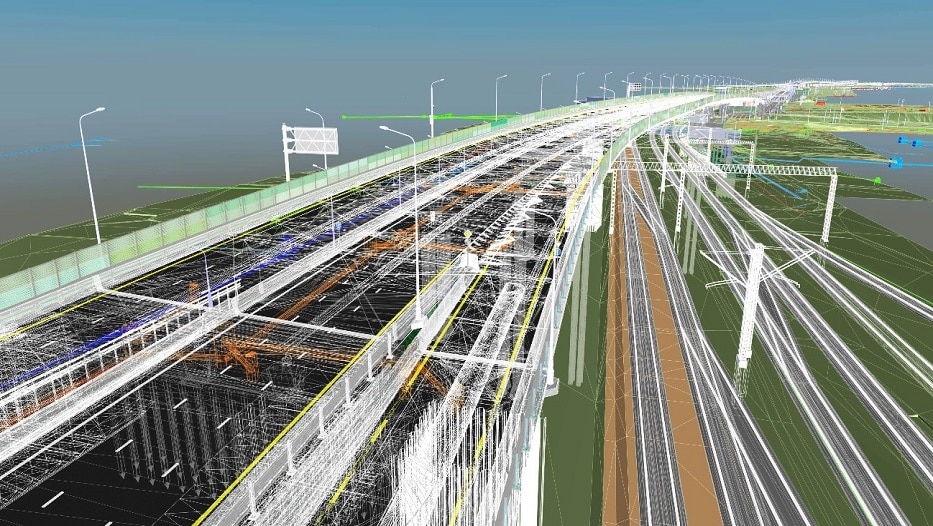admin | 28/10/2021
The AEC (Architecture, Engineering, and Construction) sector is experiencing a true revolution. The Building Information Modeling methodology and its combination with cutting-edge technologies such as Artificial Intelligence, the Geographic Information System, and Digital Twins are set to transform this traditional industry where innovation has become an inevitable requirement.
The so-called Fourth Industrial Revolution, that of technology and the digitization of processes, has led to a significant evolution in the method of building around the world. The construction sector has been forced to incorporate a new, more digital work approach, which, if well used, will be able to generate attractive opportunities for Latin America.
The specialized companies in the region must embrace a broader vision of the construction life cycle, linking it to the entire value chain of the building project from design to construction. But how does one adapt to this context?
The arrival of “Construction 4.0” helps to improve efficiency in terms of time and expenses—two of the most deeply rooted problems in this field. According to the study “Reinventing construction: A route to higher productivity” published by McKinsey, this paradigm shift can increase productivity by between 5% and 10%. However, to do this, corporations have to industrialize their processes and incorporate emerging technologies. In short, they have to acquire a production style similar to that of a factory and immerse themselves in a technological transition towards automation and the use of data.
The implementation of this type of strategy will in turn have an impact on the region’s development. The economic growth, increase in sustainability, and productivity of the different nations are currently subject to the promotion of innovation as the main predecessor to remain competitive in an increasingly demanding and globalized environment. This is essential for achieving a positive impact and for joining the economic reactivation led by public investment in Latin American infrastructures.
The article “Twelve technological innovations in the construction industry” shows some of the technologies that are having the most impact on the new construction model on a global scale. Today we focus on delving deeper into the technologies that can have the most impact on Latin America and their main contributions.
Building Information Modeling (BIM)
This is in the spotlight. It is a methodology supported by different design and modeling applications capable of generating and managing the data of a building under construction. Through this form of work, important information is obtained, such as the geometry, spatial relationships, and geographical data, as well as the quantities and characteristics of its components.
All of these data are related to each other, allowing each of the parameters to be updated in real time with their consequent savings in time and work.
There are increasingly more countries in the region that have national BIM strategies. This is the case of Chile, where it is already required for the concession of construction work carried out by public institutions adhered to Planbim and, gradually, this requirement will be extended to all planning and construction projects.
One of the most well-known examples has been the remodeling of the Santiago de Chile airport, where a single three-dimensional model has covered the areas of architecture, interior design, structures, mechanical engineering, electrical engineering, sanitary engineering, construction, and safety facilities.
Geographic Information System (GIS)
This environment designed to collect, manage, and analyze data is especially focused on geography. In the context of construction, it can be used to assess spatial location and organize layers of information into visualizations using 3D maps and scenes. In this way, it comprises the preparation of a landscape impact analysis of construction.
The different tools that the GIS technique applies to plan, verify design choices, read landscapes, and observe its possible transformations include aerial images with drones and 3D line-of-sight examinations, as well as photogrammetry to process the height of buildings.
Thanks to the evolution of this technology, it is possible to perform quantitative and qualitative analyses of the urban landscape. The additional use of virtual reality will also make it possible to determine the visible areas from any point of reference.
Digital twins
As its name indicates, it consists of a digital recreation of a physical object or system. This reproduction behaves similarly to its physical twin, allowing a set of data to be predicted and displayed that will facilitate faster and more reliable decision-making by the user.
The praxis of this technology in the AEC sector opens up an entire world of possibilities. Its integration with the BIM model of infrastructures and with the cartographic and geographical environment of GIS will favor its conversion into a dynamic system connected with the other management procedures in real-time.
The development of this capacity will facilitate cooperative and synergistic work regardless of the physical location and timing of the project. From conceptualization, through a 3D visual and quality environment connected to the different data available from GIS and BIM sources, the information correctly interrelates with each other, encouraging the different actors to share and take advantage of the information of others so that the concept as a whole effectively meets its objectives.
Big Data and Artificial Intelligence (AI)
The perpetual generation of data supports the continuous learning of AI systems that are exposed to daily improvements. Each of the technologies involved in the processes acts as a potential data source: images captured from mobile devices or drones, information arising from the BIM or GIS construction models, among others.
The knowledge generated from the data with the help of AI and machine learning systems represents an opportunity for industry professionals. On the one hand, access to applications based on the design of a large quantity of successful construction plans can be very helpful when starting a project. The possibility of a timely rectification is key. The algorithms of the future will use so-called reinforcement learning—based on traditional trial and error—to evaluate infinite combinations and alternatives based on similar approaches and help to optimize planning.
Moreover, building managers can use AI long after the construction of a building is complete. The BIM stores information about the structure, facilitates the monitoring of possible issues, and even offers solutions to prevent them.





